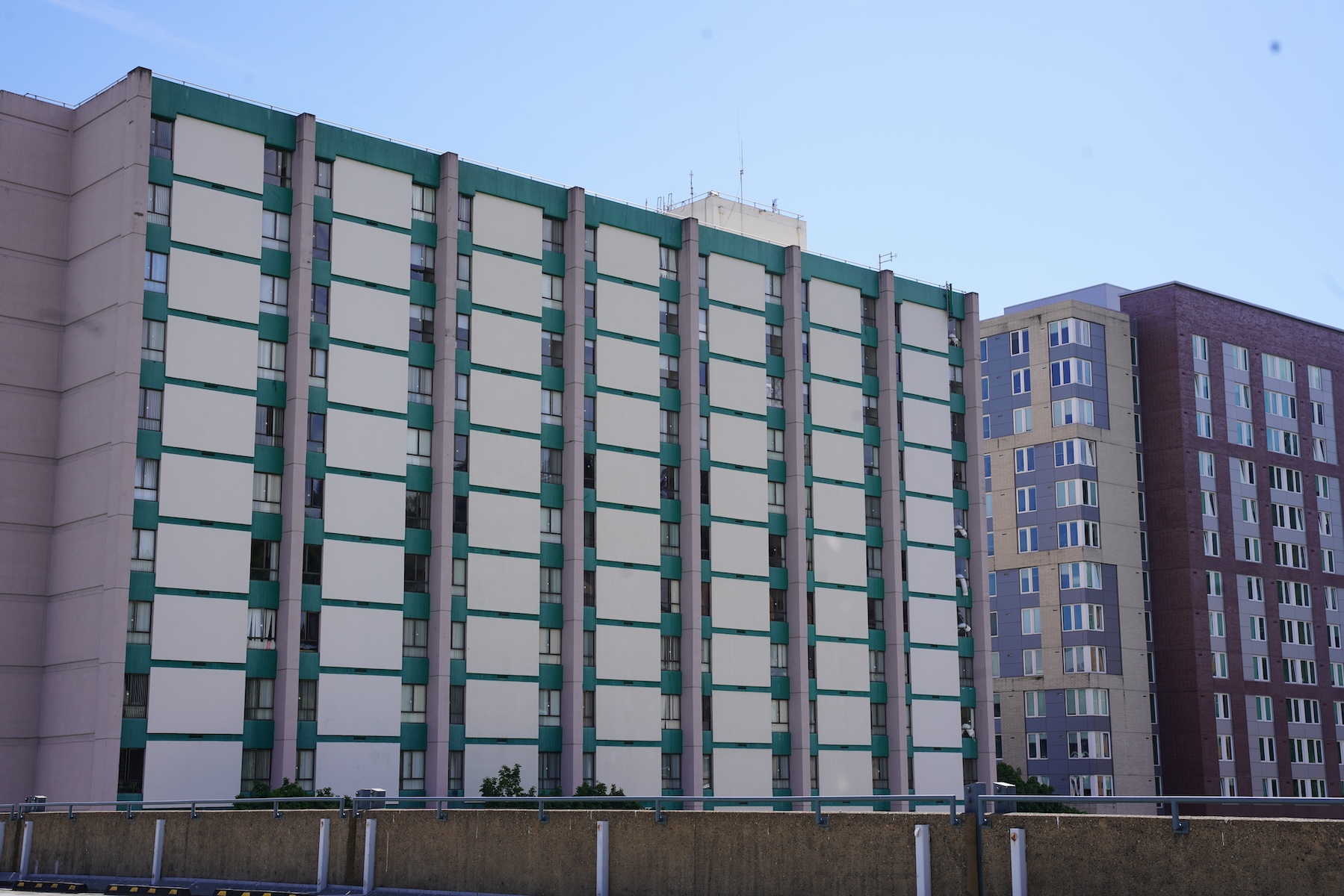On July 13, Multnomah County officials released a preliminary report on the effects of the extreme heat event that took place in late June, which resulted in over 100 deaths across the state.
According to the report, the majority of fatalities were people who did not have access to air conditioning.
“More people died from the June 2021 heat wave in Multnomah County than died from heat in the entire state of Oregon in the past 20 years,” the report stated. “What is clear even now is that climate disruption is making extreme heat events more frequent, more intense and longer in duration.”
The report also highlights that those over 65, the houseless and those susceptible to prolonged heat exposure were also those most likely to have perished during the late-June heat event.
However, according to experts, access to personal air conditioning is an important factor in surviving temperatures that can endanger human life.
“Air conditioning has proven to be one the best ways to reduce heat-related deaths,” Dr. Vivek Shandas said in a recent discussion with Portland State Vanguard. Shandas is an associate professor in the Nohad A. Toulan School of Urban Studies and Planning, and an associate researcher in the Center for Urban Studies at Portland State.
As of 2021, the state of Oregon does not require landlords to provide air conditioning to their tenants. Colleges across the state, which house thousands of students on campus at any given time, have no such requirements either.
Air Conditioning Policies
Prior to the extreme heat event in June, University Housing and Residence Life (UHRL) responded to an email from Vanguard inquiring about the use of personal air conditioning units in dorm rooms.
“Portable AC units are not allowed,” the PSU response stated. “However, [students] can purchase a small evaporative cooler.”
The email went on to describe the requirements of such an evaporative cooler, stating it “must not exceed 150% of the size of the [dorm] unit,” and that “[the student] may need to use less power in [their] dorm/unit.”
UHRL also implemented several measures to address the recent extreme heat event. According to Christina Williams, Director of Media & Public Relations for Portland State, UHRL placed “AC units or commercial fans in specific hallways that retain more heat to help with airflow and plans to add more as we are able to secure them.”
Leaving windows open when the UHRL hallways were below 90°F degrees was stated not to have presented a security concern, but, additionally, PSU had opened a cooling area for residents until Sept. 22.
PSU is not the only college in Oregon that does not allow personal air conditioning units in dorm rooms.
At Oregon State University (OSU), Stephen Jenkins is the Associate Vice-Provost of Student Affairs and the Executive Director of University Housing and Dining Services, who corresponded with Vanguard about OSU’s policies.
“Per our UHDS Policy Guide, personal air conditioners are not allowed,” Jenkins stated. “However, as in all cases, if there is need for an accommodation we work closely with students and with the Disability Access Services Office through an interactive process to make the appropriate accommodations.”
PSU also indicated that they had taken steps to protect students from the extreme temperatures. Williams stated that the June heatwave was “an unprecedented event” and, in the days leading up to the high heat, “[UHRL] and key facilities and emergency response personnel from across the university” had met to establish fan usage and cooling stations—and emergency overnight accommodations, which were stated to be utilized by about 20 students.
Assurances aside, the issue of what is owed to Oregon-based collegiate renters in terms of a safe, ambient atmosphere necessitates an explanation of what students’ rights as renters are.
Tenants’ rights not for all
“Oregon residential landlord-tenant law is mostly covered by Chapter 90 of the Oregon Revised Statutes,” Troy Pickard stated in a discussion with The Vanguard. Pickard is managing attorney and founder of the law firm Portland Defender, which specializes in tenants’ rights and landlord disputes in Portland for over a decade.
“There are a few exclusions from that, and one of the exclusions is, generally, residence at an educational institution,” Pickard said. “So, if you’re a student and you live in on-campus dorm housing, you’re almost certainly excluded from the regular landlord-tenant rules.”
One of the more important aspects of a landlord and tenant relationship is the economic contract regarding the legal term “habitability.”
“Oregon habitability law requires a landlord to supply ‘effective… weather protection of roof and exterior walls,’” Pickard stated. “The list in ORS 90.320 is illustrative, not exhaustive, so if a tenant were to rent a home that, for example, simply could not be cooled below [90°F], perhaps that tenant would have a claim that the home was uninhabitable, even though temperature is not specifically addressed.”
The difference between what a university provides to a student in dorm rooms and what a landlord must provide to a tenant under ORS 90 can often be shrouded in nuance. But, according to Pickard, laws potentially allow for students to have less rights procedurally than tenants in a standard rental agreement.
“The legal difference is that the university doesn’t have to care about what ORS 90 says in terms of habitability standards, timelines and processes for kicking a student out, etc.,” Pickard stated.
PSU did not respond when asked for comment about data on the cost of air conditioning for students living on campus.
However, considering the significant cost of air conditioning for a single renter or homeowner, the economics of air conditioning policies for large institutions like colleges or apartment buildings reasonably deserve more consideration.
Monies and Studies
College students living off-campus face challenges as well. Oregon does not require landlords to provide air conditioning generally, and student tenants can be at risk of being victimized by negligent or predatory landlords through what the Federal Trade Commission calls “phantom rentals” or “hijacked ads.”
Academically and procedurally, conflating students’ rights with tenants’ rights is still in a nascent stage. Therefore, there is limited data, for instance, on how often college students specifically are scammed by landlords or otherwise denied habitability in some way.
Protections for college students generally focus more on student loan debt relief, loan servicing or civil rights issues regarding personal information.
Policies like those of PSU and OSU that do not provide air conditioning in dorm rooms force the economic burden onto students, who are statistically less likely to have resources for items like a personal air conditioner一which, depending on the make or model, range in cost upwards of hundreds of dollars.
In 2019, according to a Federal Reserve report, 40% of Americans could not afford a $400 emergency nor had that amount in their savings account in general. Concurrently, in an Institution for Higher Education Policy analysis, researchers found that an estimated 70% of working- and middle-class students cannot afford college at all.
According to a 2019 survey from OneClass, an education services company, among the 399 students attending over 82 schools they utilized in the study, the majority of students had “between $51-$500” in their bank account—and nearly 15% of the respondents had less than $50 in their bank account.
Research from the 2018 “Still Hungry and Homeless in College” study, conducted by Temple University and the Wisconsin HOPE Lab, indicates that over 30% of respondents were “food insecure” and another 36% stated that they were “housing insecure.” Nearly 10% said they had been houseless in the last 12 months before the survey.
Furthermore, there is evidence to prove that students at all levels are not only safer, but more productive with access to reliable and more comfortable living and working environments.
In a recent study of over one million New York public school students, researchers found that “students taking an exam on a day when the outdoor temperature is [90°F] performs 13% of a standard deviation worse than they would have on a [65°F] day.”
What’s Next?
Climate change will purportedly exacerbate and expose more of these underlying challenges for college students and tenants generally, as well as their ability to be safe and secure in their respective housing situations.
Global warming is already endangering renters across the U.S., from rising sea levels in coastal areas, extreme flooding in typically dry environs and increasingly disparate climate experiences for the wealthy and the poor. The changing climate will influence energy and economic policy for decades to come.
Roughly 116 million metric tons of carbon dioxide is released each year from air conditioning. However, the total CO2 expenditures that the U.S. generated in 2019 was an estimated 6.6 billion metric tons, according to government analysis.
Regardless of what sector or industry emits the most greenhouse gases, the result is still the same: extreme weather events are on the rise and an environment increasingly unable to protect itself from the vagaries of man-made climate shifts.
“Find water is my first rule,” Shandas said. “Few things are more cooling than spending time with the body in water.”
“[Furthermore], the body cools by sweating, and since we, in the Pacific Northwest, live without humidity, going outside and allowing the breeze to evaporate the sweat is the best way to stay cool,” Shandas continued.
According to National Weather Service data, extreme heat is the number one killer when it comes to climate- or weather-related deaths; as temperatures continue rising, so will deaths from the heat.
“I see a ‘perfect storm’ brewing,” Shandas said. “With rising home/rent prices, and heightened levels of gentrification, I expect that many people are living in more financial precarity… [and] the ability to run an air conditioner seems ever more difficult.”
Oregon’s fire season is already in full swing, with the Bootleg fire in southern Oregon already the largest fire in the contiguous U.S., burning thousands of acres every day. Higher daily temperature averages are going to become a more common occurrence in the Pacific Northwest, and those without access to air conditioning are going to pay the price.
“We [in the PNW] can certainly do better than touting our ‘climate-cred,’ and start putting policies into place that can keep those most vulnerable from dying unnecessarily and provide a safe environment for our students,” Shandas said.





